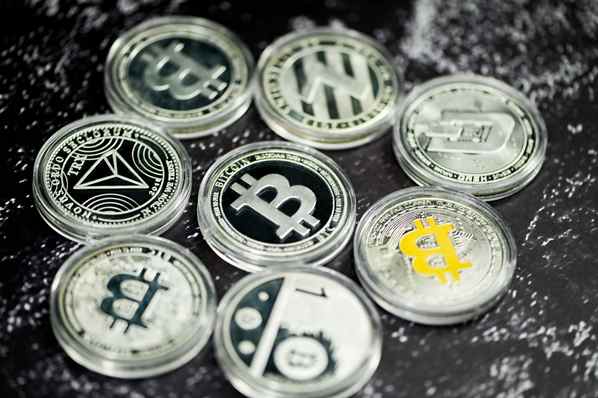
Blockchain-based currencies have been gaining popularity lately, and many people wonder if they should join the trend, hoping they will increase their profits. Bitcoin is the most popular asset in the sector, and therefore, most investors turn to it when they consider purchasing digital currencies. If you also want to add Bitcoin to your portfolio before experimenting with other assets, you must research it more. Bitcoin was created with the help of decentralized blockchain technology, so it has characteristics that are different from traditional money and are superior in terms of privacy.
Bitcoin and digital currencies have untapped potential, and if we check the history of the Bitcoin price usd it’s expected it to further grow in the following years, so people consider it a worthy addition to their portfolios. If you’re one of the investors who wants to dip your toe into blockchain-based assets, you must be aware that they have different features from traditional assets, and you must learn how to trade them. The following set of questions will help you figure out what aspects to pay attention to when investing in crypto.
What do I know about Bitcoin?
It’s quite easy to gather information about Bitcoin, considering that it’s the oldest and largest cryptocurrency by market cap. If you check the Internet, you’ll find several definitions of the concept, but you must remember that it’s a blockchain-based asset that resides on a decentralized network. Because it relies on a complex network of computers to confirm its transactions and new blocks, it requires no central authority to control its evolution.
Bitcoin differs from traditional assets because it is only in digital form, so its holders have electronic proof of their ownership. While many people use Bitcoin as a digital currency to pay for and purchase services and goods, it should be primarily seen as a store of value or financial asset.
What is Bitcoin’s goal?
The key to understanding where Bitcoin is heading is to research why it was first created. Satoshi Nakamoto, an anonymous developer or group of developers, designed Bitcoin with the intention of creating an electronic cash system for peer-to-peer transactions where no third party is involved. The first Bitcoin block, widely known as the genesis block, was mined on 3 January 2009.
Since its inception, Bitcoin has evolved into a store of value, mainly due to its scarcity. Satoshi Nakamoto developed its algorithm to allow the creation of just 21 million Bitcoins to support its high value. Over the years, Bitcoin has been often compared to gold and even called digital gold. While traditional currencies can be created in unlimited amounts, everyone knows there can only be 21 million Bitcoins, so people want to get a hold of at least some of them.
What are halving events?
Learning about halving events is essential if you want to invest in Bitcoin because it impacts its evolution and causes wild price fluctuations. The last halving took place in April 2024, and after the event, the reward for validating blocks dropped by 50%. Halvings are necessary to control the speed at which new bitcoins are created. Satoshi Nakamoto integrated them into the coin’s algorithm to ensure that the supply increases slowly over time, to support the price and ensure the asset’s scarcity.
Why does Bitcoin have value?
Bitcoin doesn’t depend on a network of intermediaries to complete transactions or a government authority to control its evolution and the number of coins in circulation. A network of independent nodes confirms blocks and transactions, and blockchain technology powers all activities in the environment.
Similarly to traditional currencies it can be used for payments. However, Bitcoin is a scarce asset compared to traditional currencies, and this feature gives it value. With each halving, Bitcoin’s supply decreases and demand increases, so the value goes up. Its underlying technology, blockchain, also boosts its value because it has extensive use cases and intrinsic value. The way Bitcoin is mined also factors into its value because the process isn’t a walk in the park; the miners need expensive hardware and consume high amounts of electricity.
What are the risks associated with investing in Bitcoin?
Before explaining the risks associated with trading Bitcoin, it’s essential to highlight that all investment assets carry diverse risks, so in this case, you only have to learn more about those specific to this asset category.
Bitcoin, like all the other cryptocurrencies, is a highly volatile asset, and its value fluctuates in the short and long run. It’s crucial to examine price evolution to understand how suddenly it can change. Cryptocurrencies’ value is influenced by several factors and can go on a downward spiral overnight. Therefore, investors must always keep an eye on the industry to anticipate such movement.
Why do I want to add Bitcoin to my portfolio?
It’s paramount to establish what your goals are so you can align them with your investment strategies. Do you purchase Bitcoin for portfolio diversification or other purposes? Determine your motivation so you can figure out what methods to use to make the most of this decision. Do you want to purchase Bitcoin and not other digital currency? Are you doing it for fear of missing out now that its supply dropped? Do you want to increase your profit quickly? Do you want to add it to your portfolio before the next bull run?
Your investment strategy influences how you handle Bitcoin, and you should pay great attention to it. Seasoned investors recommend allocating smaller portions of your budget to different assets so you can minimize risk. Therefore, you should buy Bitcoin, but you should also look at other blockchain-based projects to diversify your portfolio. Ensure that you respect the conditions of your strategy because they’re meant to help you reach your goals.
Final thoughts
Invest in Bitcoin only after you thoroughly understand how the asset functions. It might be challenging at first, but research will make everything clear.




